Skiing, mountains, and the winter atmosphere of Kyrgyzstan. A one-day ski trip to Orlovka – skiing near Bishkek
- Duration: 1 days.
- Price: from 280$ 220$ for group
- Group size: Small group tour
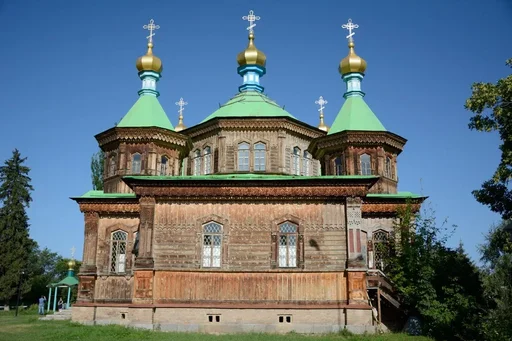
Archaeological evidence shows that the area around modern Karakol was inhabited in deep antiquity. In the Issyk-Kul basin, Bronze Age artifacts have been found - such as metal tools - proving the presence of pastoralists as early as a thousand years before Christ. On the northern shore of Issyk-Kul, near Karakol, there remains a gallery of ancient rock carvings (petroglyphs) created during the Andronovo culture (2nd millennium BC), later enhanced in the “animal style” by the Saka tribes (8th–3rd centuries BC), and finalized by early Turks (6th–9th centuries AD). In addition to petroglyphs, Saka burial mounds up to 100 m in diameter and fragments of pottery and other daily-life artifacts of ancient eras are found nearby. These finds - from primitive stone tools to royal barrows - indicate that the shores of Issyk-Kul served as a refuge for various cultures and societies since ancient times.
In the Middle Ages, the Issyk-Kul region fell under the influence of Central Asian states. In the 6th–7th centuries, Turkic tribes of the Western Turkic Khaganate roamed and settled here. Later, towns appeared along the Silk Road caravan routes - medieval settlements such as Barskaun and Ton on the lake’s southern shore are known. Legends suggest that Christian monasteries and Buddhist temples may have existed around Karakol: stories link the shore of Issyk-Kul to a monastery allegedly housing the relics of the Apostle Matthew. However, reliable written records of a permanent city at Karakol’s site do not appear until the 19th century. By the mid-19th century, this territory served as seasonal pastures for Kyrgyz tribes - wintering on the milder lake shore climate and summering on the high-altitude pastures of the Tien Shan.
The modern urban history of Karakol begins with the Russian expansion into Central Asia. In the 1850s, eastern Issyk-Kul voluntarily came under Russian protection to defend against raids by the Kokand Khanate and pressure from Qing China. Earlier, in the 1830s, the Kokand built a small fort here named Karakol after the local river, but it lasted only briefly: by 1843 local Kyrgyz revolted and expelled the Kokand garrisons. When the famed explorer Pyotr Y. Semenov-Tyan-Shansky visited in 1857, he found no settlement or traces of the former fort - the Karakol Valley awaited a new phase of development.
July 1, 1869 is considered Karakol’s official birthday. On this day, Russian Stabskapitan Baron Alexander Kaulbars established a military post and laid out the quarters of the future city. The site was chosen strategically at the foot of the Terskey Ala-Too range, at the mouth of the Karakol River (from Turkic-Mongolian “kara-kol,” likely meaning “black river”), 12–13 km from Issyk-Kul’s shore along the caravan route from the Chuy Valley to Kashgar (Western China). The new Karakol was planned as a support and trade-administrative center for all Issyk-Kul. The city immediately adopted a rectangular street grid and the status of a “garden city”: each settler was required to plant a orchard and avenue in front of their home, quickly turning Karakol lush with greenery. Early buildings were made of adobe, but after the destructive 1887 earthquake, reconstruction used mostly wood - sturdy log cabins with carved porches and intricate window frames gave Karakol the appearance of a provincial Russian town.
The settlement grew rapidly. By 1872 Karakol had 132 households. The city was initially multicultural: in 1872 of roughly 150 residents the majority were Tatars and Sarts (sedentary Uzbeks) from Tashkent and other Turkestan cities, with only about 20 Russian settlers (excluding the military garrison). In 1877 several thousand Dungan Chinese Muslims fleeing rebellion in western China arrived, enriching the ethnic mix and introducing elements of Chinese architecture and cuisine (one famous dish - cold noodle soup ashlyanfu - originated with the Dungan). From the late 1880s Slavic colonists - peasants from Ukraine, the Volga region, and Russian heartlands - began to arrive. As a result, the population rose from 8 000 in 1897 to over 15 000 by 1913. Around 1900, roughly one-third of residents were Russian, about 16% Kyrgyz, and the remainder other groups (Tatars, Uighurs, Dungan, etc.).
As part of the Semirechye region of the Russian Empire, by the early 20th century Karakol had become a notable center of trade, crafts, and education. Trade comprised over a third of the city budget (34% in 1894) - lively bartering took place here: fabrics, sugar, and dried fruits were imported from Fergana and Tashkent, while wool, hides, livestock, honey, and grain were exported from Karakol. Small industries also appeared: by 1914 about 60 workshops and small factories (brewery, tannery, soap works, candle works, sawmills, wool washers, etc.) operated in and around the city. Karakol also earned the nickname “city of firsts” in modern Kyrgyzstan. It hosted the first meteorological station (1887, established by researcher Y.I. Korolkov), the first public library (1907, founded by local historian N.M. Barsov), the first horse-breeding farm (1912, organized by Stabskapitan V.A. Pyanovsky), and in 1911 the region’s first girls’ progymnasium (secondary school for girls). Notably, Nagima Abduvalieva - the mother of writer Chingiz Aitmatov - studied at Karakol’s girls’ gymnasium. It is no surprise that an educated, well-appointed Karakol attracted travelers and scholars: expeditions into Central Asia’s heart, led by famous explorers (P.Semenov-Tyan-Shansky, N.Przhevalsky, etc.), departed from the city.
A key milestone was the expedition of Nikolay M. Przhevalsky - the eminent Russian geographer and traveler. In 1888, Przhevalsky died near Karakol on Issyk-Kul’s shore while preparing for another journey. By his will he was buried lakeside, and Emperor Alexander III ordered a memorial in his honor. In 1889 Karakol was renamed Przhevalsk, a name it bore until 1922. Thus by the late 19th century Karakol (Przhevalsk) was a thriving uyezd town of Semirechye: with tree-lined streets, bazaars and caravanserais, a vibrant multicultural community, and a reputation as one of the region’s most developed centers.
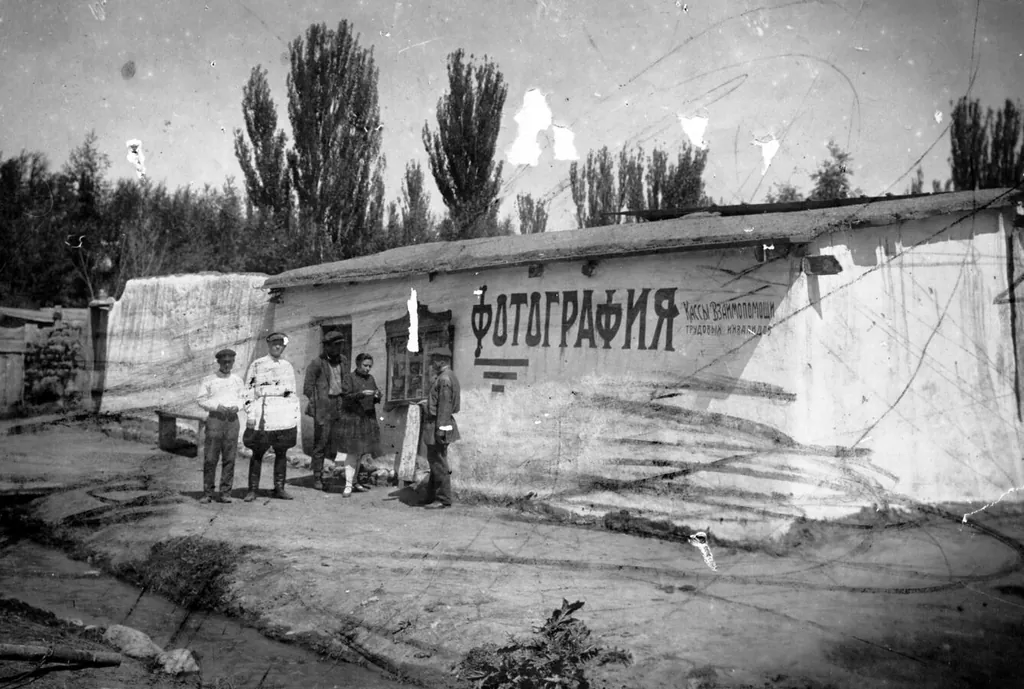
During the Soviet era, the city underwent another phase of change, including new renamings and a transformed appearance. In 1922, after Soviet power was established, Przhevalsk reverted to its historical name Karakol. However, in 1939, on the centenary of N.M. Przhevalsky’s birth, the city was again renamed Przhevalsk - a name it kept until the USSR’s collapse. From the 1930s through the 1980s, Przhevalsk developed as an important regional center for agriculture and industry. A network of kolkhozes and sovkhozes specializing in livestock, horticulture, and technical crops formed around the city. Within Karakol itself, union-significant industrial enterprises emerged. In machinery and electrical engineering, factories produced transformers, low-voltage equipment, and even household electric stoves.
Light industry: a garment factory and a shoe factory producing traditional Kyrgyz footwear operated here.
Food industry: a large meat-processing plant, bakery, and brewery were in operation.
Thanks to infrastructure improvements (roads, power lines) and the founding of educational institutions, the city’s population grew and its cultural life flourished. The 1939 census recorded over 21 000 residents; by the late 1980s, over 60 000.
A unique chapter of the Soviet era was the establishment of military facilities on Issyk-Kul of union significance. Near Przhevalsk, by the village of Pokrovka (now Koy-Sary), the USSR Navy’s 954th Test Base was set up - a range for testing torpedo and mine weapons in the unique high-altitude lake environment. This secret naval base operated from the 1940s, remaining a discreet but vital part of Soviet Kyrgyz infrastructure.
In civic life, Soviet reforms reshaped Karakol (Przhevalsk). During anti-religious campaigns many places of worship were closed or repurposed: the old Orthodox church became a gym, most mosques were shut. The city expanded territorially with new residential areas of standard apartment blocks and broad avenues. By the 1970s–80s, Przhevalsk had all hallmarks of a regional center: a drama theater, palaces of culture, libraries, cinemas, parks, and a stadium. The economy diversified: alongside factories, research institutes (e.g., an agricultural experimental station and the Issyk-Kul Regional Agro-Industrial Research Center in the 1980s), medical facilities (a 425-bed regional hospital opened in 1968), and training institutes emerged. The late 1980s brought stagnation and industrial decline - before the USSR’s end some factories struggled, and citizens increasingly turned to small business, trade, and private farming. Nevertheless, the Soviet period left Karakol a rich heritage - from industrial sites to cultural traditions - that carried into independence.
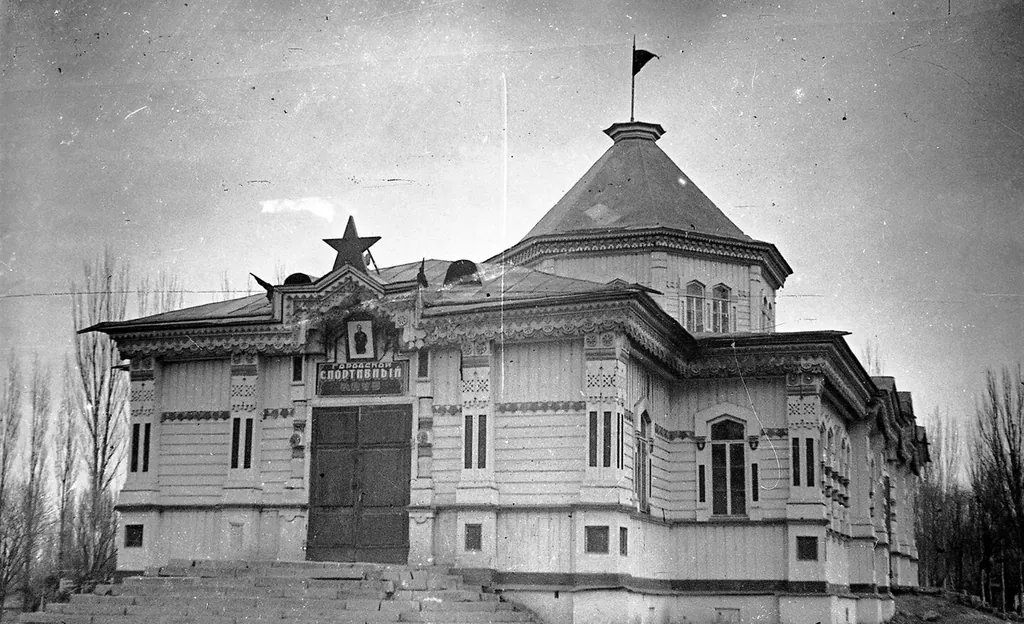
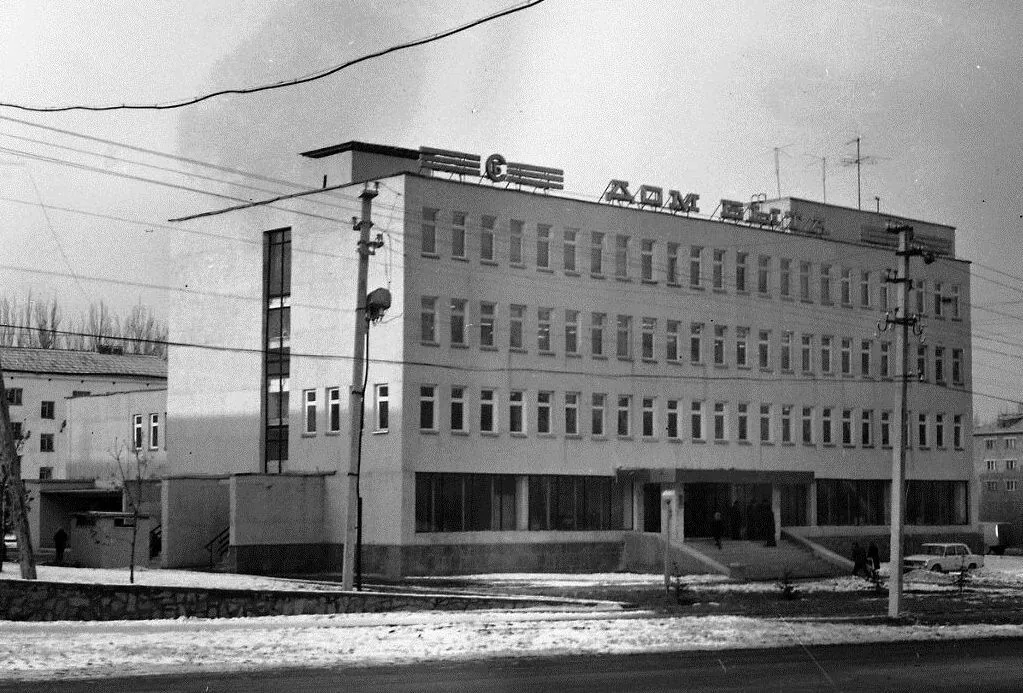
Karakol’s rich history is reflected in its religious architecture. The city is famed for unique houses of worship of different faiths coexisting side by side. A jewel among them is the Dungan Mosque, built in 1907–1910 by Chinese Muslim Dungans who settled here after 1877. This mosque is striking: made entirely of wood without a single nail, following traditional Chinese temple architecture. Its multi-tiered roof and intricately carved columns (42 supports) resemble a Buddhist pagoda, painted in symbolic red, yellow, and green to ward off evil spirits and bring good fortune. Ornamental motifs depict grapes, pomegranates, pears, and peaches, symbolizing abundance. During Soviet rule (1929–1947) the mosque was seized and used as storage. Thanks to its designation as an architectural monument, it survived - unlike eight other Karakol mosques demolished under the USSR. Since 1947 it has functioned again as a mosque, remaining a key spiritual center for the city’s Muslim community.
Another symbol is the Holy Trinity Orthodox Cathedral - a historic wooden church with bright green domes. The first Orthodox temple here was founded in 1869 for the Russian garrison as a small chapel, later replaced by a brick church. The devastating 1889 earthquake destroyed it, so the community built a new wooden cathedral on a stone foundation from 1889–1895. Its main dome’s cross reached 26 m, dominating the skyline. Renowned for its ornate interior and iconostasis, it was considered one of the finest in Turkestan. After the October Revolution it was closed, the priest repressed, and the building repurposed as a warehouse, club, gym, and dormitory over the years. By the early 1960s only about 50% of the original structure remained - five onion domes were lost and the interior damaged. Only in the late 1980s, recognizing its historical value, restoration began. In 1991, after independence, the cathedral was returned to the Russian Orthodox Church. By 1997 the domes were restored, and today it once again serves worshippers and stands as an architectural and spiritual landmark of Issyk-Kul Region.
Besides Dungan and Russian communities, other ethno-confessional groups have long lived in Karakol. From the 1850s there was a Tatar Muslim community, opening the first Karakol mosque - a prayer house for Tatars and Central Asian merchants. In 1878, funded by Tatar merchants led by Kazan mullah Mukhtar Bashirov, a larger mosque in the Volga-Tatar style was built with two minarets of 20 m and 31 m. A madrasa opened there, educating not only Tatar children but Muslims of various ethnicities. During Soviet years the Tatar mosque fell into disrepair but was returned to worshippers and restored in the 1990s. Thus in Karakol you can see the Orthodox cathedral, several Sunni and Shia mosques, and small prayer houses of other faiths - reflecting the city’s centuries-old multicultural character among Kyrgyz Muslims, Russian and Ukrainian Christians, Tatars, Uighurs, Dungans, and others.
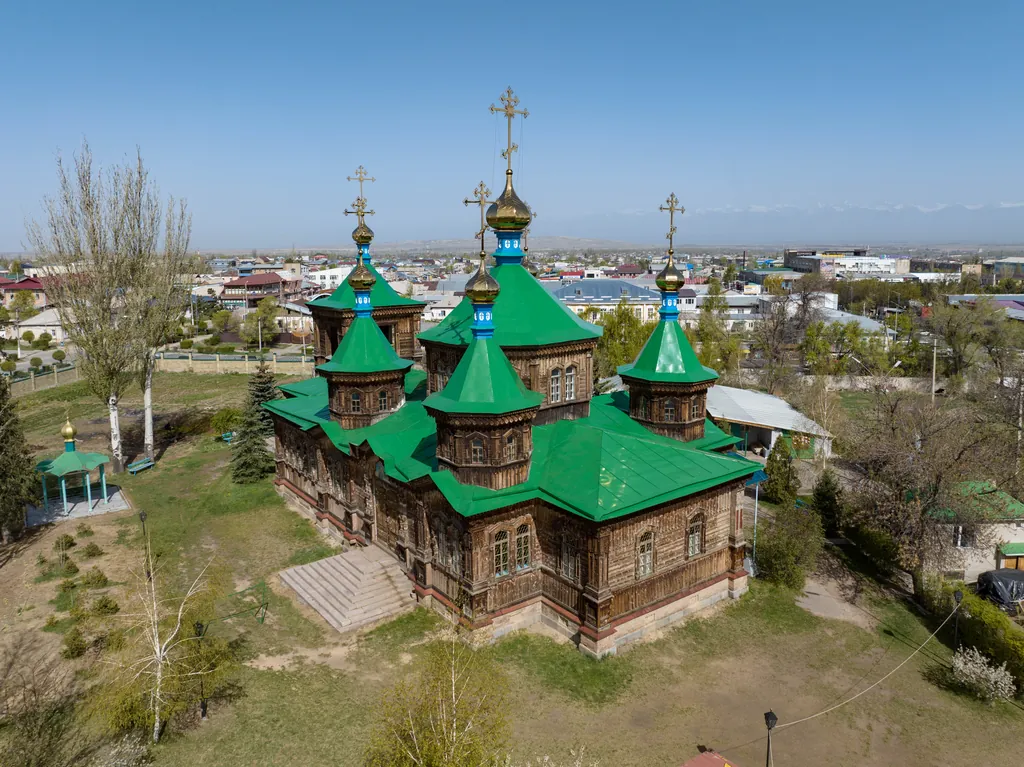
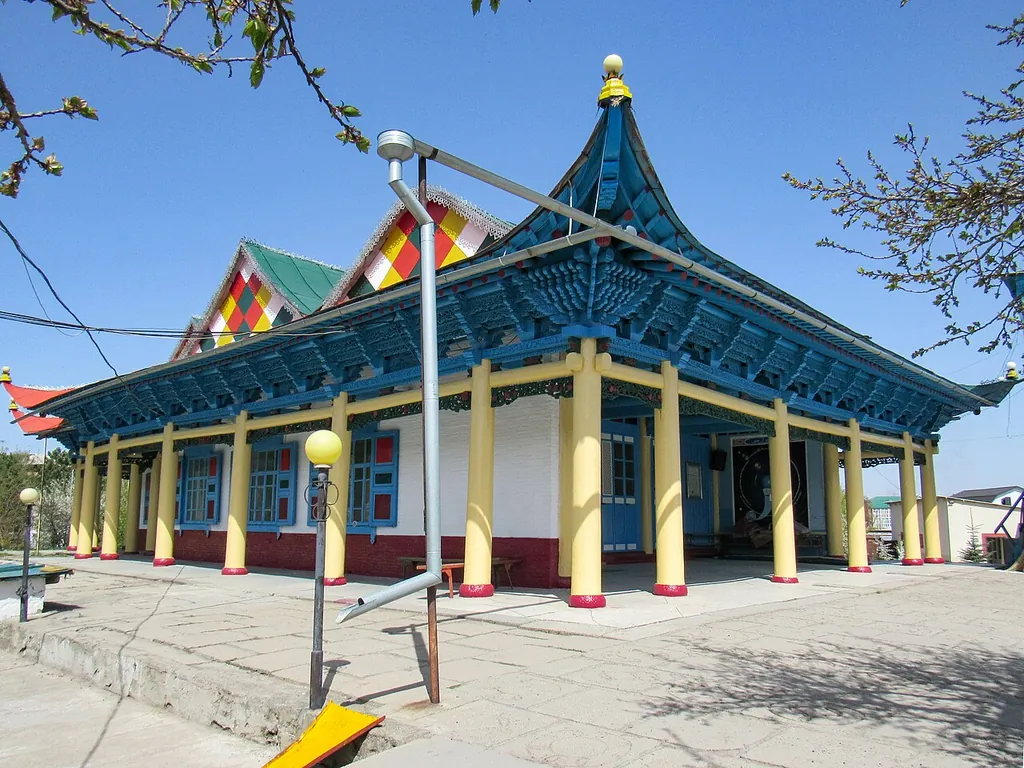
Karakol is rightly called a city of architectural monuments. Walking its old quarters, one sees dozens of well-preserved late 19th–early 20th-century buildings erected during its heyday. The historic center features low merchant mansions and estates - many wooden with elaborate carvings - framed by shady trees. One such house is the 1889 mansion of merchant M. Ilyin, now the Karakol Historical and Local Lore Museum. The two-story building with balcony and mezzanine exemplifies Siberian merchant architecture of the era, blending Russian classicism with Eastern decor. The museum’s collection exceeds 10 000 items - from Stone and Bronze Age artifacts (tools, weapons, petroglyphs, ritual objects) to ethnographic exhibits detailing nomadic Kyrgyz life. Separate halls cover the colonial and Soviet periods with documents and photos, including those related to Swiss traveler Ella Maillard’s 1932 visit. The museum carefully preserves the city’s rich heritage - Karakol is rightly seen as one of Kyrgyzstan’s principal cultural centers.
Visitors can also explore the memorial museum of N.M. Przhevalsky, located 12 km from Karakol on Issyk-Kul’s shore in Pristan-Przhevalsk settlement. This complex includes the explorer’s grave and monument, plus exhibits on his travels across Central Asia. Personal belongings, diaries, maps, and specimens of rare species he discovered are displayed. Every year hundreds of tourists and scholars pay tribute to the man after whom the city was named for nearly 50 years. Other notable sites include the Art Gallery, the architect Zh. Toktonaliyev’s house-museum, and an exotic zoo (the country’s only zoo, founded in 1987). Nearby is the open-air “Old Mill” museum - a water mill and oil press from the 1870s still in operation, now a private museum and popular rural tourism attraction.
Of course, Karakol is famed not only for architecture but for its splendid nature. At the foot of the majestic Tien Shan peaks, it serves as a base for many routes. Just a few kilometers south lies the picturesque Karakol Gorge - a green river valley plunging into snow-capped mountains. In surrounding hills hide high-altitude lakes and hot springs. A popular trek leads to Lake Ala-Kul at ~3530 m altitude, whose turquoise waters framed by snow peaks are called the pearl of the Terskey Ala-Too. Equally famous is the Altyn-Arashan Gorge (“Golden Spring”), where thermal waters form natural pools amid alpine meadows, overlooked by Peak Palatka (~4680 m). About 30 km west lies the magical Jeti-Oguz Gorge, known for seven red rock formations - the “Seven Bulls” - and the legend of warriors turned to stone. Mineral springs and waterfalls nestle in the canyon, and pine forests fill the air with healing scent.
And let us not forget Lake Issyk-Kul itself, just a 20-minute drive from Karakol. As Kyrgyzstan’s largest lake, famed for clear water and mild resort climate, it draws swimmers and sunbathers. Although Karakol is 12 km from the nearest bay, it remains a key hub for beach tourism. In summer many visitors stay in Karakol to combine lake leisure with mountain excursions. A network of resorts and guesthouses operates around the city. Thus Karakol offers travelers a unique blend of cultural landmarks and natural beauty: one day you can explore a historic mosque and cathedral, the next be among mountain lakes or hot springs or hike to a glacier.
After the USSR’s collapse the city in 1991 regained its historic name - Karakol. Today it is Kyrgyzstan’s fourth-largest city (after Bishkek, Osh, and Jalal-Abad), administrative center of Issyk-Kul Region. In the 1990s Karakol, like the country, faced a challenging transformation: many factories closed and the economic structure shifted. Yet thanks to its strategic location and inherited potential, the city adapted. The government established the Karakol Free Economic Zone to attract investment and entrepreneurship. Former Soviet enterprises were replaced by new production facilities. Today Karakol hosts IssykKulElectro (machinery), Karakol-Budai (grain processing), Ak-Bulak (dairy), Toshtuk (meat processing), plus construction materials and non-alcoholic beverage manufacturers. The city remains the main trade center for eastern Issyk-Kul - its largest bazaar draws merchants and buyers from neighboring regions of Kazakhstan and China.
Transport accessibility plays a vital role. Although the nearest railway station is in Balykchy (~220 km away), Karakol is connected by good highways to other parts of the country. The 400 km to Bishkek can be covered in 6–7 hours by car or bus, following the scenic southern shore of Issyk-Kul against a backdrop of snowy peaks. In summer there are also road links to Almaty via the Kegen Pass, convenient for foreign tourists. A small airport handles light aircraft and charters (the main passenger flow uses the Tamchy International Airport on the lake’s north shore). Within Karakol, marshrutka minibuses provide public transport, and for mountain trips local guides and 4x4 drivers are popular.
Over independence, Karakol has established itself as Issyk-Kul’s tourism capital. If Soviet Przhevalsk was primarily industrial-agricultural, modern Karakol focuses on tourism, sports, and services. The city attracts visitors year-round: winter draws skiers and snowboarders, summer brings hiking, mountaineering, and beachgoers. Just 7 km from the center lies Kyrgyzstan’s largest ski resort “Karakol” (2-day ski tour) - a modern base with multiple lifts and slopes of varying difficulty. Thanks to reliable snowfall and mild climate, the ski season runs November to April, and Karakol regularly hosts national ski championships. Summer tourism shifts to trekking, horseback tours, and jeep safaris in surrounding gorges. Dozens of tour operators, guesthouses, hostels, and hotels operate in the city. Festivals of ethnic culture, craft fairs, mountaineering competitions, and bike marathons are held. The cultural scene is lively: the colorful spice and vegetable bazaar, famous Karakol ashlyanfu, and other Dungan, Uighur, and Kyrgyz dishes draw gourmets. For youth there are nightclubs and art centers hosting concerts and exhibitions.
The city’s educational and scientific potential has endured and grown. The K. Tynystanov Issyk-Kul State University, several institutes and university branches (e.g., Institute of Cooperation, branch of the International University of Kyrgyzstan), and medical, pedagogical, musical, and technical colleges operate here. Over 15 secondary schools, including lyceums and gymnasiums, serve the community - education remains a strong suit. Sports facilities include stadiums, a swimming pool, and a hippodrome (one of the republic’s oldest, operating since 1959 for horse racing and the national kok-boru game).
Modern Karakol cares for its urban space. In recent years many historic houses have been restored under architectural preservation programs. The city center remains green - those gardens and poplar avenues laid out in the 19th century still provide a pleasant microclimate. Buildings from different eras coexist harmoniously: you can see an old wooden church, a brightly painted Chinese-style mosque, Soviet five-story blocks, and new office buildings. The city administration invests in infrastructure: roads repaired, a water supply system from mountain springs, and modernization of power networks. Environmental initiatives - such as introducing separate waste collection - are underway. As a popular resort, Karakol meets high standards of amenities and strives to maintain them. Especially lively during summer and winter tourist seasons, the city’s population virtually doubles with visitors, seasonal markets open, and yurt camps appear on the lake shore.
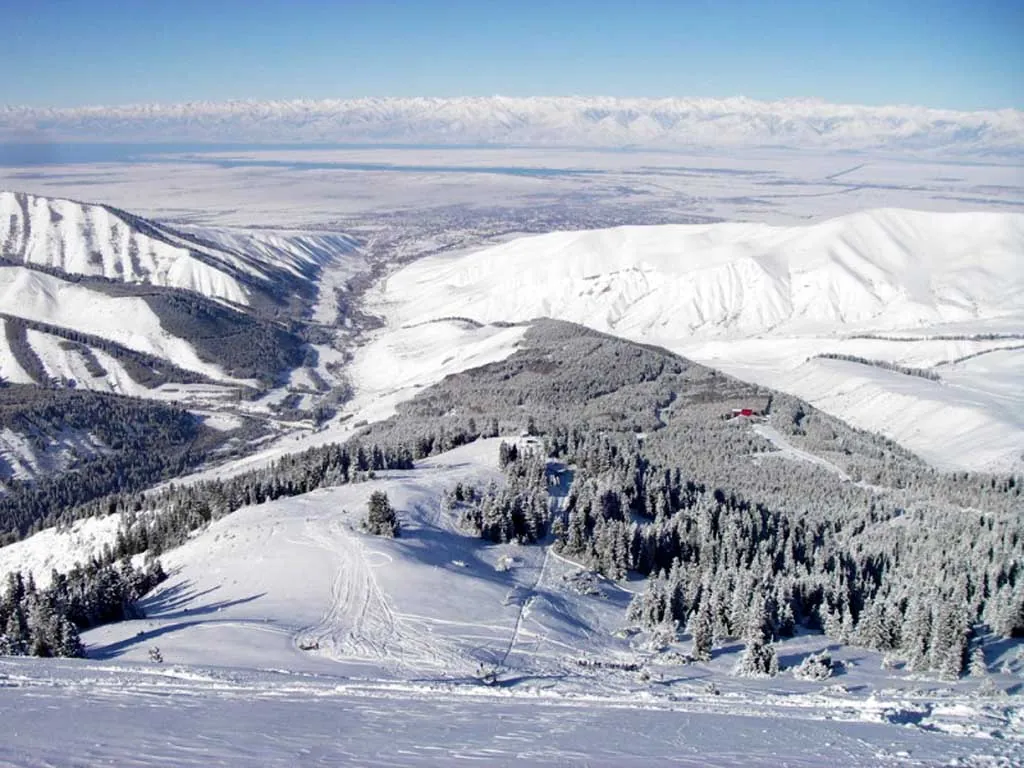
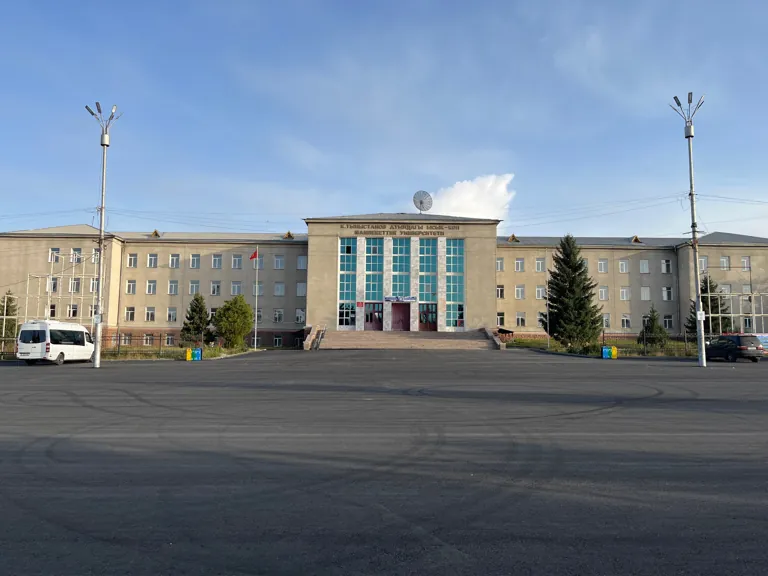
Karakol abounds with fascinating facts and legends that make it even more appealing to travelers. As mentioned, the city earned the nickname “city of firsts” in Kyrgyzstan - it was home to many innovations of its time. The first meteorological station (1887) and first public library (1907) have been noted. Additionally, the country’s first girls’ gymnasium opened here in 1911, educating a generation of women. Notably, the mother of writer Chingiz Aitmatov studied there, and the two-story gymnasium building on Lenin Street survives today as an architectural monument. Karakol was also where the first Kyrgyz-language book was published (1913 in the local Tatar print shop) and where the first secular schools for Kyrgyz children opened in the early 20th century.
Local legends add a veil of mystery. One romantic tale tells of a monastery beneath Issyk-Kul. According to oral tradition, in the Middle Ages a large Christian monastery stood near Karakol’s shore. When Mongol invasion threatened, monks reputedly submerged a reliquary containing the relics of Saint Matthew in the lake’s depths. A 14th-century Catalan map even marks a “St. Matthew’s monastery” by Issyk-Kul. Many treasure hunters and researchers have searched for this site underwater. In the 2000s Kyrgyz archaeologists reported finding submerged structural remains, but the legend remains unverified. Still, the Holy Trinity Cathedral in Karakol holds ancient icons said to have been rescued from the sunken monastery at Svetly Mys (a cape near the city), lending the legend further allure.
Another legend from Kyrgyz epic tradition speaks of the Seven Bulls of Jeti-Oguz. It tells that long ago a cruel khan abducted a lovely maiden belonging to another man. In a fierce battle, seven hero-knights turned into mighty bulls to defend her, but were petrified on the rocks, forming seven red cliffs that gave the gorge its name. Today tourists admire these formations, recalling the tale of loyalty and bravery, each seeing in the rocky silhouettes the shapes of legendary bulls.
A humorous local riddle captures Karakol’s frequent renamings: “What do a fisherman and a resident of Karakol have in common?” The answer: “Both lived most of their lives in Przhevalsk.” Indeed, the city’s name changed so often that older Karakol residents spent much of their lives under the name Przhevalsk. Only in 1992, almost a century after the first renaming, was the name Karakol finally restored. Locals joke that they are always ready for change, having replaced their station and administration signs four times in a century.
Lastly, Karakol’s culinary fame deserves mention. This is where the famous Karakol ashlyanfu - a cold spicy noodle dish with vinegar and spices - originated and draws tourists who visit Issyk-Kul just for it. Although ashlyanfu is of Dungan origin (its name derives from the Chinese “liangfen,” meaning “cold noodles”), the Karakol variant is renowned across Kyrgyzstan for its rich flavor. Festivals celebrate ashlyanfu’s variations, making it as emblematic of Karakol as beshbarmak is of Bishkek.
Above all, visitors note the warmth and hospitality of Karakol residents. The city’s legacy as a “garden city,” its unhurried pace, green courtyards, and multicultural fabric foster a sense of friendliness. Karakol people take pride in their city and love sharing its stories - whether about Przhevalsky’s adventures or Swiss traveler Ella Maillard’s 1932 visit. In any case, Karakol delights guests with legends of sunken relics, pioneering scientific achievements, or simply a cup of hot tea with honey beneath the Tien Shan peaks. This city has absorbed centuries of history and culture and become a modern tourist center while preserving the soul and color of the past.
Skiing, mountains, and the winter atmosphere of Kyrgyzstan. A one-day ski trip to Orlovka – skiing near Bishkek
Visit two pearls of Kyrgyzstan in 1 day on a car tour
In 3 days we will travel around Lake Issyk-Kul. We will spend two days in the city of Karakol, devoting them to skiing at the ski resort. And we will also relax in the thermal springs!
Visit the Valley of the Seven Bulls, see Issyk-Kul and relax in the thermal springs
Experience all the beauty of Kyrgyzstan's nature behind the wheel of a comfortable and daring BMW F650GS tour enduro. These impressions are worth any money and will never be forgotten.
Forgotten Rivers and Mountain Peaks: A Journey Along the Southern Shore of Issyk-Kul is a three-day tour that immerses you in the unique natural beauty of Kyrgyzstan.
This route combines the picturesque mountain canyons of Kok-Moinok, Lake Issyk-Kul, the taste of national cuisine and a trip along one of the most beautiful roads in the country – the Boom Gorge.